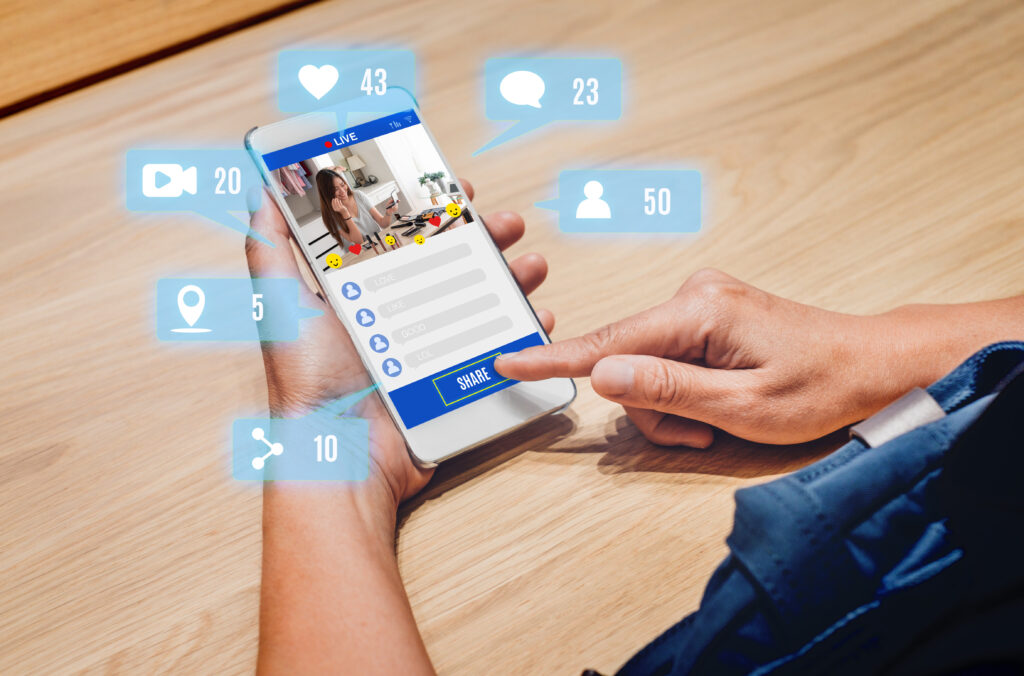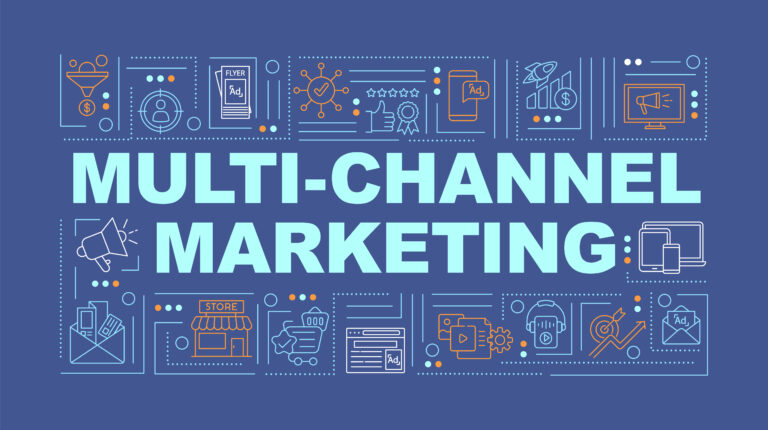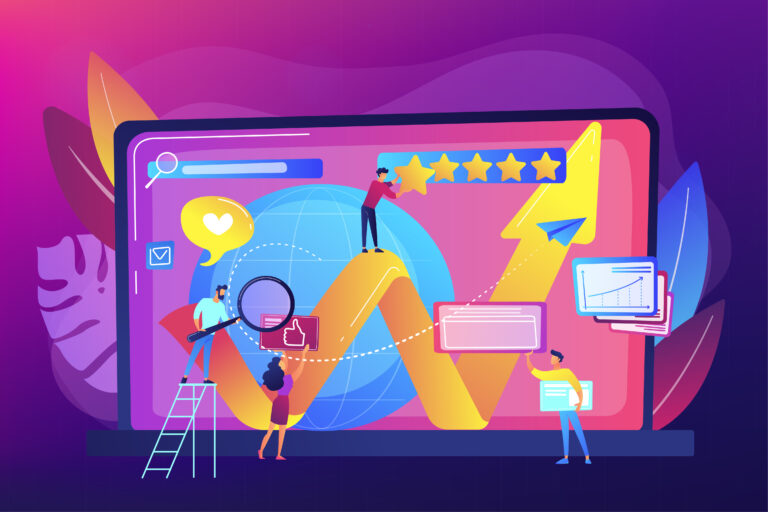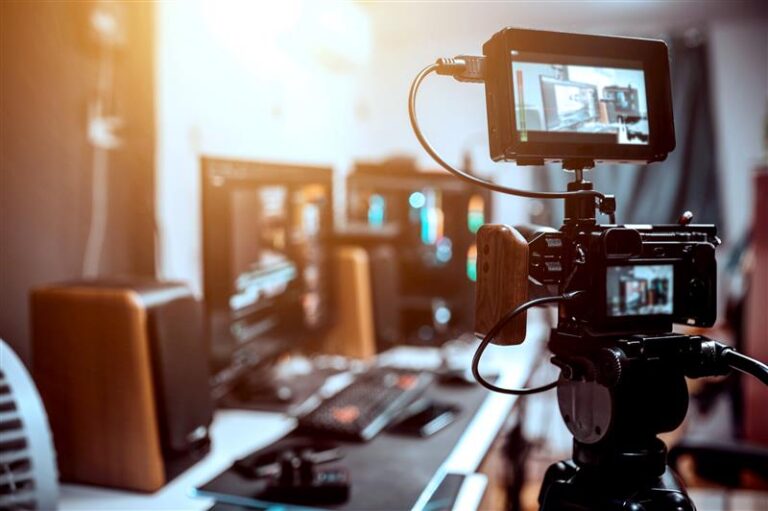In today’s culture where information swirls from all corners of the internet, the most valuable tenet for your brand or product is trust. A recent Edelman study showed that nearly 70% of consumers need to trust the company to buy a product or use its services. So, if a consumer doesn’t trust that what you’re selling will work, nothing else you do will matter in the end, no matter how you position or push the brand.
So how do you instill trust into a consumer base that’s increasingly untrustworthy of corporations and advertisements? Deliver your brand message through someone relatable with an opinion your audience values. Organic word-of-mouth recommendations are one of the stronger ways to build brand advocacy, but finding a friend to tell every prospective customer how great you are isn’t an effective strategy.
That’s where using Influencer Marketing for brands comes in.
What Is Influencer Marketing?
Influencer Marketing is where influential individuals, usually with a large social media following or market segment, advocate for and deliver a brand’s message to their own audience. Brands can find Influencers with followers consistent with their own target audiences, then use the Influencer to deliver the message with inherently more trust than they ever could.
Why Does Social Media Influencer Marketing Matter?
Studies have shown that 63% of consumers trust Influencers more than if the advertisement came directly from the brand because the Influencer is already familiar to the audience. This gives brands/products an added layer of credibility.
Brands have also found that, on average, their Influencer Marketing ROI is $5.20 for every $1 spent and that the brands spending in the top 13% have seen returns as high as $20 per each $1.
Even with a limited budget, with Micro-Influencer Marketing, where Influencers have a slightly smaller following, advertisers see a 6% engagement rate on Instagram, while Mega-Influencers’ rates hover right around 1.97%. Micro-influencers have more niche content but their followers tend to be more loyal, trust them, and advocate heavily for what they sell.
How to Develop an Influencer Partnership Strategy
Before you jump into Influencer Marketing, make sure you formulate your plan of attack and follow some best practices.
- Define what Influencer Marketing Success means for you
Before you get started, clearly define what you want to achieve. Whether you want to drive brand awareness, lead acquisition, or engagement will influence how you choose the right Influencer and which platforms you’ll use.
- Know Your Target Market
As with any marketing campaign, you need to know who you want to reach. Identifying your audience and segmenting them in the correct way can make or break the effectiveness of your marketing efforts. Knowing your goals will help you identify your audience.
- Plan Your Influencer Marketing Budget
Content Creation with Influencers is largely dictated by your budget. If your scope is limited, Micro-Influencers with a smaller but more engaged audience might be better than going through a bigger name or using a celebrity.
Work out with your selected Influencer ahead of time how they’ll be compensated. Some are okay simply receiving free products, whereas others want more substantial payment.
- Choose Campaign Type
Your marketing goal will dictate which kind of campaign you use. See below for some of the main ways to use Influencers to your brand’s advantage:
a. Sponsored Content:
Paid sponsorships are the most common form of Influencer Marketing. Content creation with Influencers organically integrates your product or brand message into work that aligns with what the Influencer typically produces. This helps them promote your brand without being overly “sales-y” or promotional. Consumers often ignore advertisements because they’re overly-exposed to them in all corners of their days. However, Influencer content focuses more on relationships, helps entertain an audience, or solve a particular problem. We touch on this a little later on in this article, but if chosen well, the brand’s message or product will fit seamlessly into the content the Influencer regularly produces.
b. Giveaways:
A great way to grow reach, engagement, follower size, and to increase brand exposure is through giveaways or contests. Influencers will offer prizes to their audience in exchange for following a brand’s social account, Liking and sharing posts, or tagging friends.
c. Influencer Affiliate Marketing:
Affiliate Marketing allows Influencers and other third parties to promote a brand’s products while collecting a commission if their promo leads to a sale. Influencers with large audiences can use this to their advantage. Attribution is often associated with a link that the Influencer will post to their pages. If a customer clicks on the link and purchases a product, the Influencer gets a cut of the revenue. Affiliate Marketing is great for driving sales, generating leads, and increasing conversions.
d. Giftings:
Gifting is where a brand sends free product samples to an Influencer whose followers overlap with the company’s target audience and they’ll in turn talk about the product on their channels, such as YouTube, TikTok, or Instagram. This helps increase brand awareness and exposure, customer acquisition, and traffic. It’s also a great way to foster long-term connections with Influencers and their followings.
e. Brand Ambassadors
Making an influencer a brand ambassador, whether it be a celebrity or smaller micro-influencer, is a great way to create a long-term association between your brand and their audience. It can help foster brand awareness, enhance trust and credibility with your target audience, and increase your market share.
f. Content Whitelisting
Content whitelisting, or Influencer whitelisting, is where the brand uses the influencer’s social media handle in paid advertising so they can more sophisticatedly target potential customers. This can grow a company’s brand awareness to a specific audience base and boost site traffic. It has a lot of advantages for the brand:
- It gives them control over posts using whitelisted content. They’re then able to target the post to people that don’t follow the influencer and control its exposure.
- They’re able to tweak copy and creative to more closely align with brand guidelines and tone
- It allows them to increase the time that a post can be seen by the target audience. Some social formats, like Instagram Stories, disappear after 24 hours.
Whitelisted ads look slightly different from typical influencer posts. They take Influencer-generated content and repurpose into a more traditional digital placement on the brand’s own channel. This makes the brand fully synonymous with the Influencer, linking their partnership and further strengthening the brand’s connection with the Influencer’s audience.
g. User-Generated Content:
User-generated content in Influencer Marketing is an authentic, cost-efficient way for brands to increase engagement, and improve brand credibility and awareness. With social media, everyone has a platform to create content and share their opinion — brands can entice people to talk about them through prizes, contests, or being a part of a larger conversation.
Since these aren’t paid ads or partnerships, they offer another level of credibility beyond traditional Influencer Marketing. They’re more organic and depict someone’s real experience, not a curated presentation that comes off like an advertisement (even if it’s from an authentic influencer). This creates a stronger human connection, makes it more relateable, and creates a significantly stronger sense of trust amongst your audience.
- Determine Your Social Media Platform
While social media usage is expected to keep rising over the next three years, marketers still need to be intentional with what platforms they use with Influencers. As of 2022, TikTok and YouTube have the highest average time per day spent of the social channels, but although TikTok has the largest following, 70% of their users are between 18 and 34 — not ideal if you need to hit an older audience.
- Lights, Camera, Action: Time To Create Content
Now for the fun part: making content. You’ll need to make sure that your creative aligns with the influencer’s audience so it’s easy for them to share and introduce your brand to their followers. It won’t matter how well you hit the target if the messaging isn’t relevant to their needs or if it doesn’t align with the influencer’s past work.
- Find The Right Influencer
Your marketing goals and brand will determine which influencer you go with. Their following needs to align with the people you want to reach while also making sure that their past content is a good fit for you. Pay attention to these metrics when making your selection:
- Engagement rate
- Post frequency
- Personality/tone of voice
- Authenticity
- Campaign Promotion
Now it’s time to help your new partner and promote the campaign. Launch their work on your social channels and bridge the gap between them and your audience.
- Measure Results
Ensure that you’re monitoring the metrics that you determined were the most important at the beginning of the campaign and adjust your approach as needed.
How Snapshot Can Help
Snapshot Interactive has already helped some clients explore Influencers for top-of-funnel
E-commerce Marketing work. If you think Influencer Marketing might be the right move for your brand, we can be your partners throughout the process.
Sources:
https://blog.hubspot.com/marketing/influencer-marketing-power
https://sproutsocial.com/insights/microinfluencer-marketing/
https://khoros.com/resources/social-media-demographics-guide
https://hypeauditor.com/blog/popular-influencer-marketing-campaigns/
https://www.linkedin.com/pulse/role-user-generated-content-influencer-marketing








